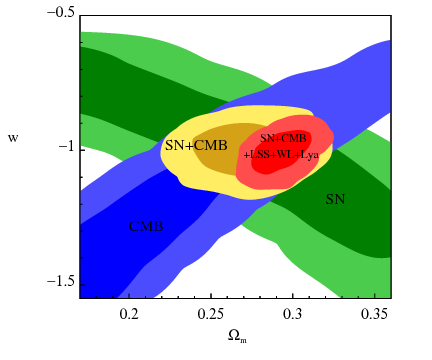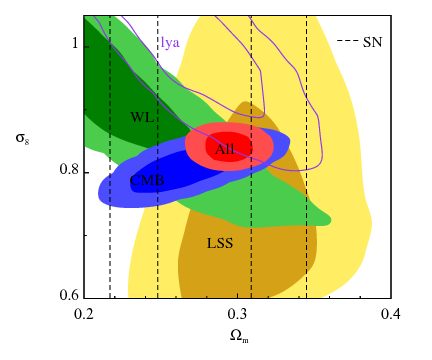 |
In the past I have modified cosmomc to constrain a variety of interesting models: quintessence/phantom dark energy models, decaying dark matter, Infra-red cascading during inflation. I have also written a weak lensing likelihood code to include the weak lensing data into Mukov Chain Monte Carlo (MCMC) simulation. In the left panel I am showing the equation of state (EOS) of dark energy and the fractional cold dark matter density are constrained by different cosmological data sets. For each data set, the degeneracy between the two parameters causes "cosmic confusion". However, with many complementary cosmological observations, such degeneracy can be broken. The parameters constrained by a combination of the many cosmological observations converge to a concordance model.
|
Shown in the right panel is the constraint on fractional matter density $\Omega_m$, and $\sigma_8$, a key cosmological parameter describing the amplitude of linear matter power spectrum at scale $8h^{-1}$ Mpc. Althoug little tension between different data sets can be seen in this case, at two sigma (95.4% confidence) level they are consistent with the standard flat $\Lambda$CDM model.
In both plots I have used the latest available data sets in Nov 2009, which include Cosmic Microwave Background data (WMAP 5, Boomerang, Acbar, CBI, MAXIMA, DASI, VSAF, QUAD, BICEP), Weak Lensing data (COSMOS, CFHTLS-wide, RCS, VIRMOS, GaBoDS), Large Scale Structure data (SDSS LRG DR7), and Lyman alpha forest data. |  |